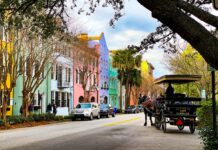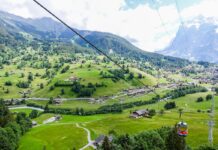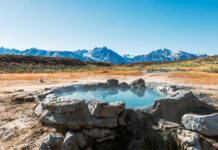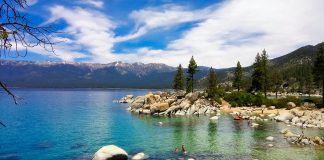North Carolina is a beautiful state. It has something for everyone from the amazing beaches on the coast to the picturesque beauty of the mountains. North Carolina is home to lighthouses, national parks, amazing aquariums and museums, and some unique landmarks. With so many options, it can be hard to decide which places to visit in North Carolina. If you are considering a trip to the Tar Heel State, here are the top places to visit in North Carolina.
Table of Contents
The Outer Banks
A string of barrier islands off the coast of North Carolina, the Outer Banks span 200 miles and is home to some of the most beautiful beaches in the country. Besides the beautiful beaches and the quaint coastal towns, the Outer Banks is home to five lighthouses and a number of national parks.
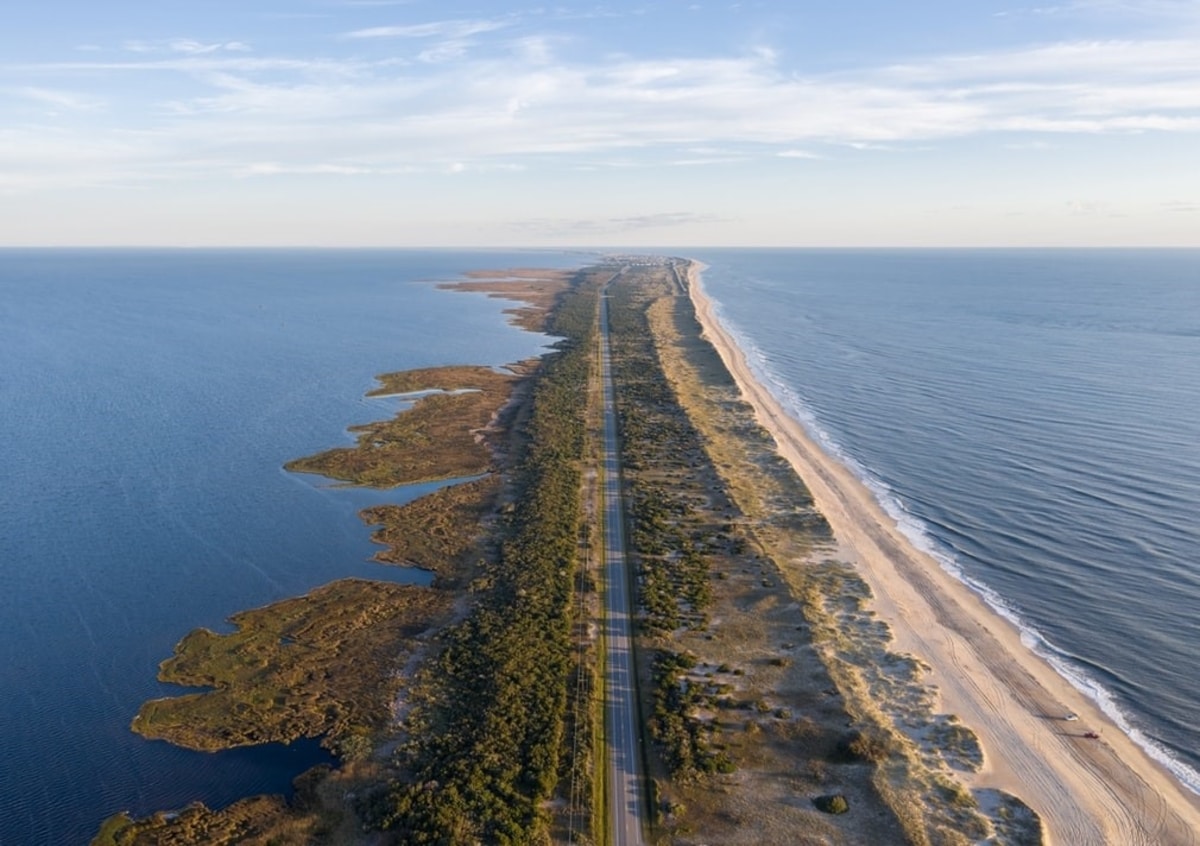
The most northern section of the Outer Banks is the Currituck National Wildlife Refuge. You can also spot bald eagles, barred owls, great blue herons, and American egrets throughout the year. In the summer, sea turtles come ashore and lay their eggs on the beach at night. Just south of Currituck National Wildlife Refuge is Corolla, one of the most amazing places to visit in North Carolina because it is home to a herd of wild horses that live on several beaches on the Outer Banks. These wild horses roam freely and are most commonly found in the four-wheel-drive areas of the beach.

The middle section of the Outer Banks is home to Kitty Hawk and Kill Devil Hills where the Wright Brothers achieved the first successful airplane flight. Of the places to visit in North Carolina, the Wright Brothers National Memorial is both in a beautiful location and has some cool things to see like a replica of the plane that made that first flight, reproductions of their camp buildings, a huge monument on the top of a picturesque hill, and you can stand at the place where Wilbur and Orville Wright first took that historic first flight.
Across the sound from Nags Head is Manteo and Roanoke Island, home to one of the original English settlements in America. The Lost Colony, as it is known today, was founded in 1587 and was made up of 117 English men, women and children. Just three years after it was established, the island was deserted and there was no sign of the colonists. After nearly 450 years, the mystery of what happened to the colonists is still a mystery.
Leaving Nags Head, you pass Jockeys Ridge State Park and the tallest living sand dune on the Atlantic coast. Offering breathtaking views of both the ocean and Roanoke Sound, Jockeys Ridge is a great spot for seeing a beautiful ocean sunset. It is the perfect location for flying a kite and there are also vendors in the park that offer hang gliding lessons. Traveling south beyond Jockey’s Ridge will lead you through Pea Island National Wildlife Refuge. Pea Island is home to more than 365 species of birds, 25 different species of mammals, and 24 species of reptiles.
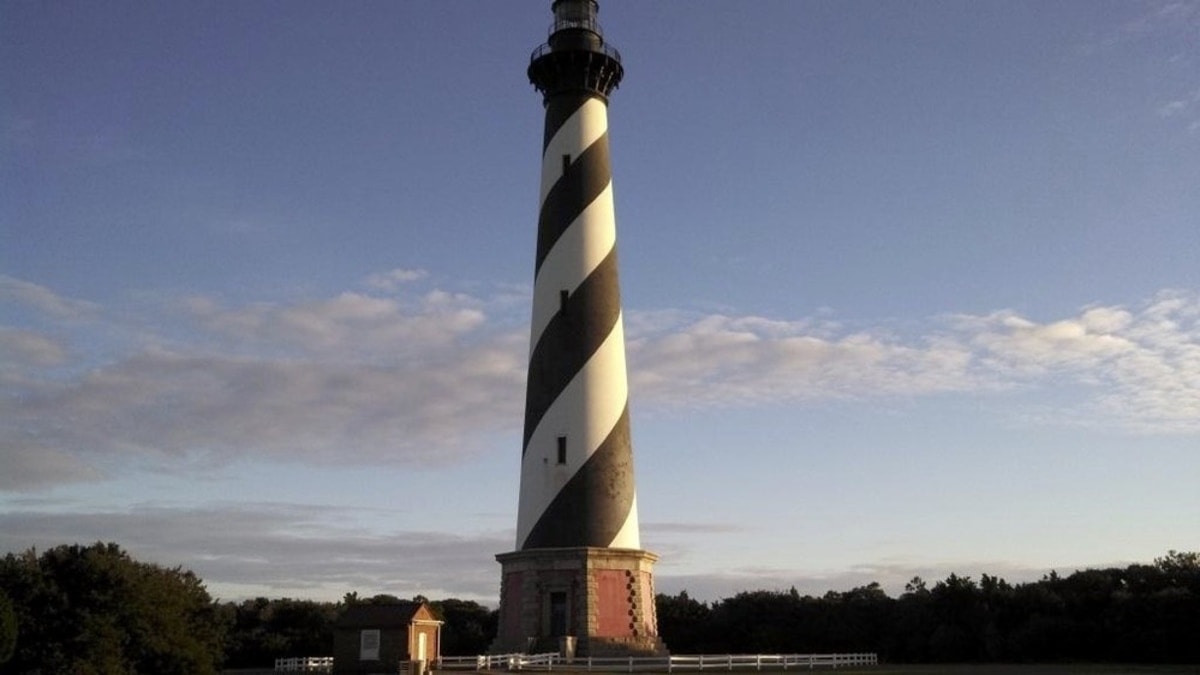
Further south lies the Cape Hatteras National Seashore. This section of the Outer Banks ends with the village of Hatteras. Here you can either turn around and return up the coast to get back to the mainland, or you can take an hour ferry ride to Ocracoke Island. The free ferry runs every half hour to hour (depending on the time of year) and can accommodate motorcycles and any size car, trailer or recreational vehicle that can be operated on the highway.
Ocracoke is a must-see in terms of places to visit in North Carolina. Just 16 miles long, the island is only accessible by ferry and boasts the most beautiful beaches in North Carolina. Ocracoke has a small herd of the wild ponies that live in the Outer Banks, a cute little lighthouse, and was a favorite docking point of the notorious pirate Blackbeard (he was finally captured just off the coast of Ocracoke Island and you can visit the cove where that fateful battle took place).
Wilmington
Further down the coast, another of the great places to visit in North Carolina is the historic port city of Wilmington. From Wilmington, visitors can access three of North Carolina’s most popular beaches – Carolina Beach, Kure Beach, and Wrightsville Beach.
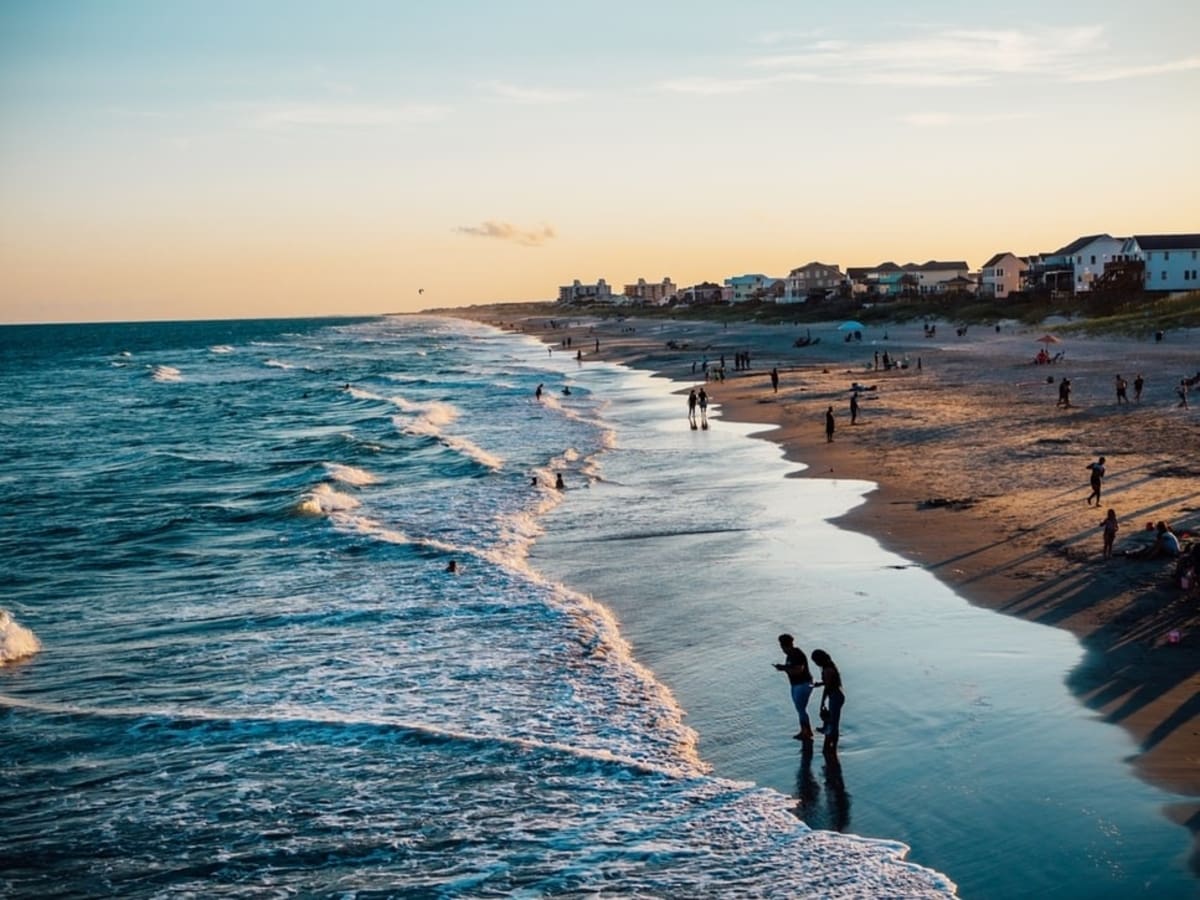
A trip to Wilmington is not complete without some time spent walking along the Riverwalk, which runs along the Cape Fear River. Spend some time checking out the many art galleries, boutiques, shops, and restaurants. Sit outside and enjoy the view at one of the many restaurants along the river. You can also explore the Riverwalk with one of the many scenic river cruises offered throughout the year from historic and eco-tours to sunset cruises.
Across from the Riverwalk, you can visit the WWII Battleship NORTH CAROLINA. The Battleship is permanently moored here. Visitors can take a self-guided tour of the nine levels that include living spaces, mess decks, gun turrets, powder storage, a sickbay, and more.
While downtown, visit The Cotton Exchange, a series of eight refurbished warehouse buildings full of unique shops and restaurants. This area is also home to a bustling nightlife with its funky breweries and classy wine bars. Since Wilmington is considered to be one of the most haunted cities in the world, there are a number of ghost tours that take brave visitors on adventures around downtown after dark complete with stories about many of the haunted homes and cemeteries in the area.
Spend some time outdoors at Airlie Gardens. Open year-round, the Gardens are made up of 67 acres of walking paths, formal gardens with seasonally blooming flowers, live oaks, a butterfly house, and sculptures. They also host a Summer Concert Series, Family Fun Nights, and other special events like a yearly oyster roast and a special Christmas time event called Enchanted Airlie.

Before leaving Wilmington, visit the North Carolina Aquarium at Fort Fisher. Found in Kure Beach, the aquarium is open every day except on Thanksgiving Day and Christmas Day. See jellyfish, sea turtles, an albino alligator, sharks, seahorses and all sorts of freshwater and ocean fish. Check out the free daily animal encounters or one of the dive shows where you can talk to a SCUBA diver while he is swimming with rays and eels.
Asheville
On the other side of the state in the mountains, one of the top places to visit in North Carolina is Asheville. Full of historic landmarks, arts, and natural beauty, Asheville is one of the most unique places to visit in North Carolina. It was once voted America’s Quirkiest Town by Travel & Leisure and has been named one of Good Morning America’s Most Beautiful Places in America. Its unique downtown can be explored through a self-guided walking tour known as the Asheville Urban Trail.
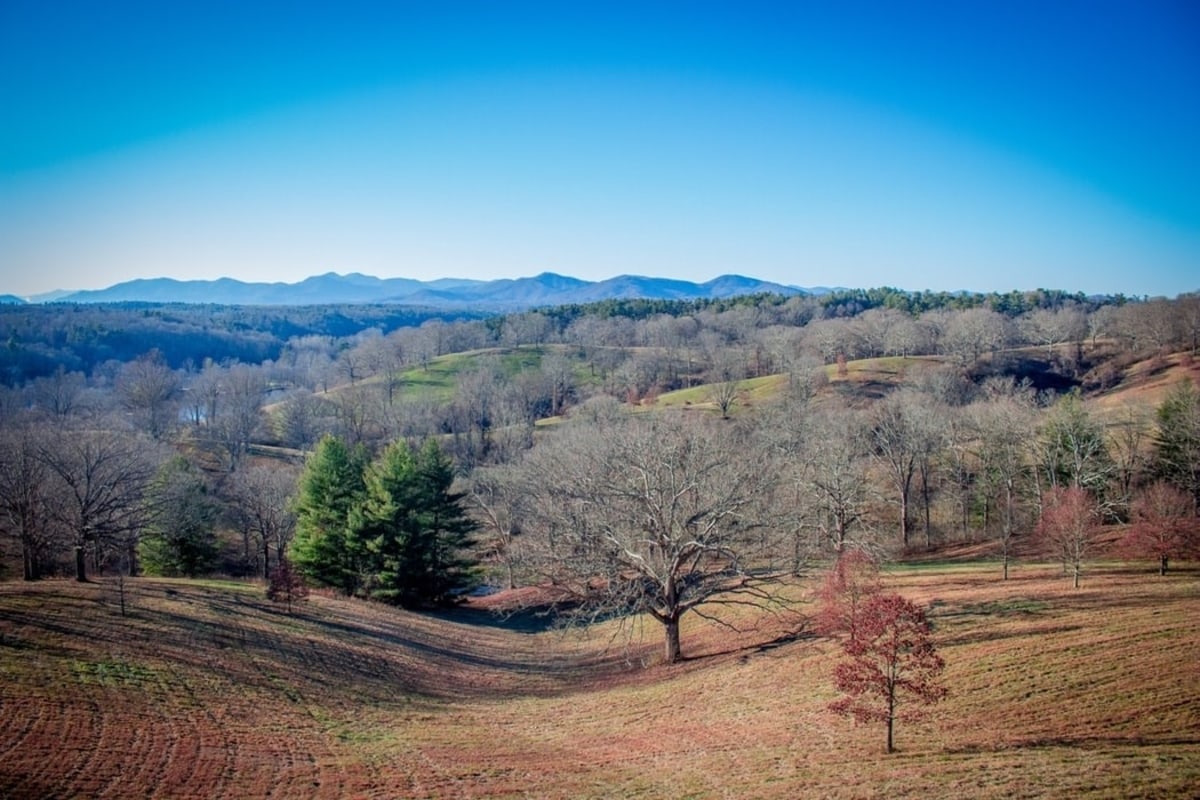
The trail follows 30 sculptural points in downtown Asheville and includes both amazing art and interesting historical points about Asheville. See a giant old-fashioned iron near the Flatiron Building, modeled after the famous skyscraper on Fifth Avenue in Manhattan. There is also a collection of five bronze statues that includes a clapping girl, a banjo player, a violinist, and a few revelers celebrating the music of the Appalachian mountains. They also serve as a reminder to bring a blanket and enjoy the live music on Roger McGuire Green for Shindig-on-the-Green that takes place on Saturday nights during the summer months.
Keep exploring and see a bronze pocket watch that is a tribute to former Asheville resident William Sydney Porter, who is the author of the famous short story The Gift of the Magi and who is buried in Asheville’s Riverside Cemetery. Along the way, visit one of the awesome shops or restaurants you will also find scattered around downtown.
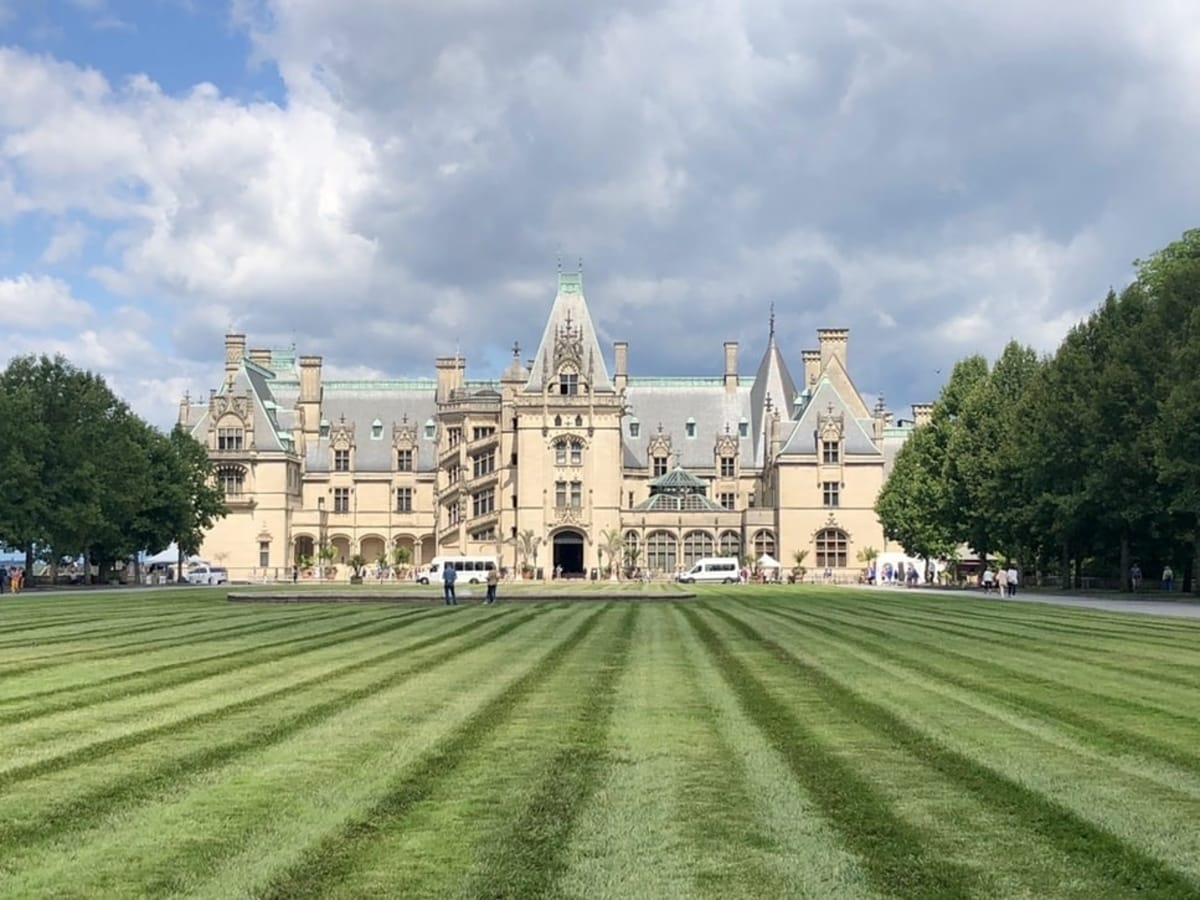
Asheville is probably most well-known for the world-famous Biltmore Estate. Built by George W. Vanderbilt in the 1890s, the Biltmore is a Châteauesque-styled mansion with 250 rooms, including 35 bedrooms, 43 bathrooms, and 65 fireplaces. It is the largest privately-owned house in the United States. In addition to the house, the 8,000-acre estate is home to trails and beautiful gardens, which include one of the country’s most complete collections of azaleas. The Biltmore is also home to a winery, shopping, dining, and a luxury hotel.
The Blue Ridge Parkway
When you are ready to leave Asheville and explore another of the must-see places to visit in North Carolina, hop on the Blue Ridge Parkway. Spanning pretty much the entire western part of the state and into Virginia, the Blue Ridge Parkway is a 469-mile ribbon of road that weaves through the region’s most beautiful scenery. Millions of visitors enjoy the Parkway each year.
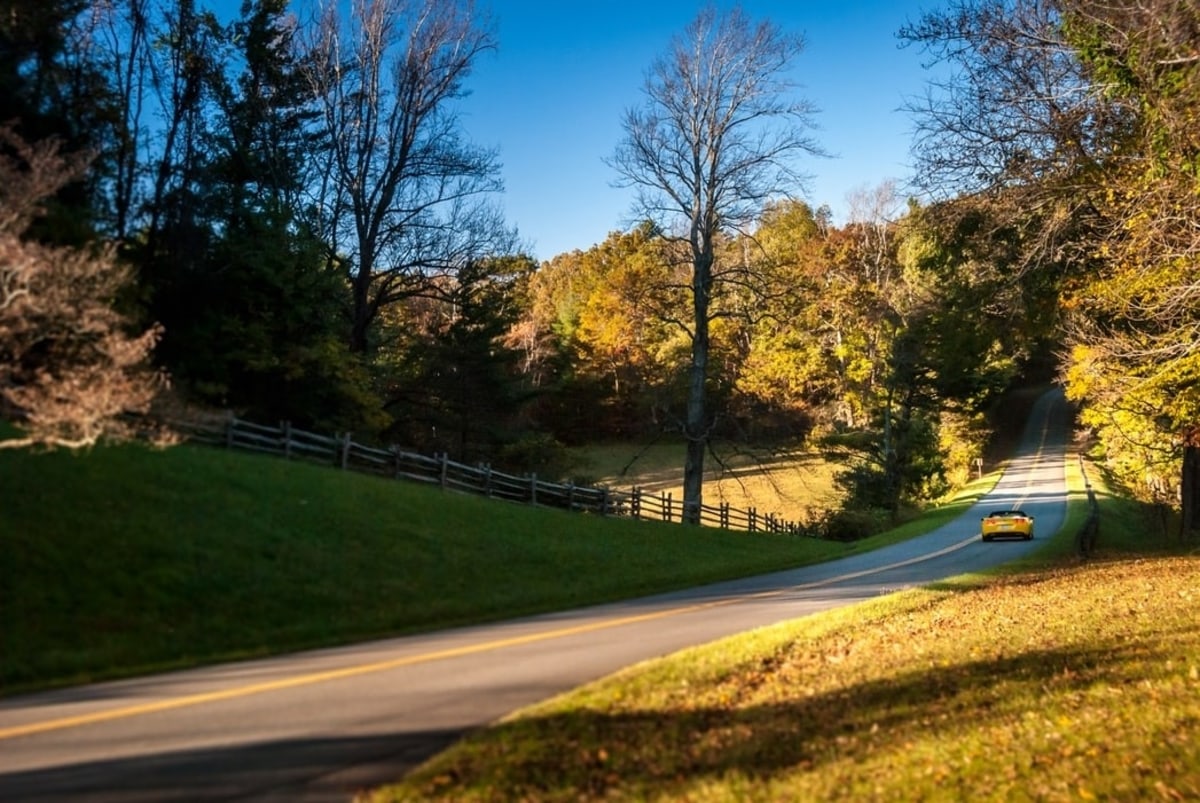
It is home to some of the oldest mountains in the world, the highest mountain peak in the eastern United States, the oldest river in North America, the deepest gorge east of the Grand Canyon, and the highest waterfall east of the Rockies. You can experience the Parkway as a multi-day drive or as a day trip to a particular, special area.
The Parkway was designed for leisurely driving, so the speed limit in most areas is 45 miles per hour. There are plenty of overlooks for you to stop and take in the breathtaking views and take photos. Many species of animals and plants make their homes along the Blue Ridge Parkway and it is not uncommon to catch a glimpse of a white-tailed deer, wild turkey, or a black bear.
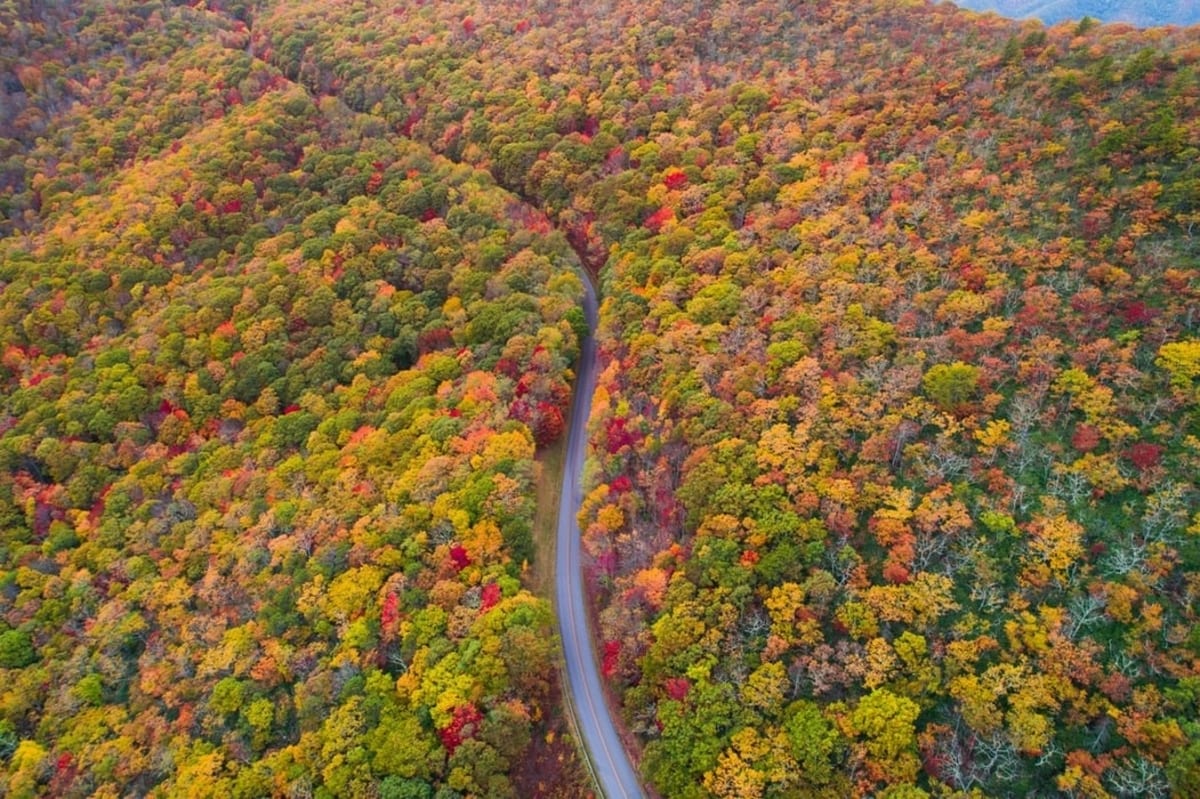
The scenery is beautiful at any time of year, but it is particularly beautiful when the leaves are changing color in the fall. The leaves here are at their peak fall color from mid to late October, depending on your elevation. But be aware that this is the most popular time of the year for visitors to the Parkway, so if you are planning to stay overnight somewhere, you will need to make reservations months ahead of time.
Great Smoky Mountains National Park
Great Smoky Mountains National Park is the most visited national park in the United States. It is famous for its amazing wildlife and the 850 miles of beautiful trails, making it one of the top places to visit in North Carolina. Over 1,500 black bears inhabit the forest here, as well as all kinds of deer, fox, turkey, and even the occasional elk, which were recently re-introduced to the area.
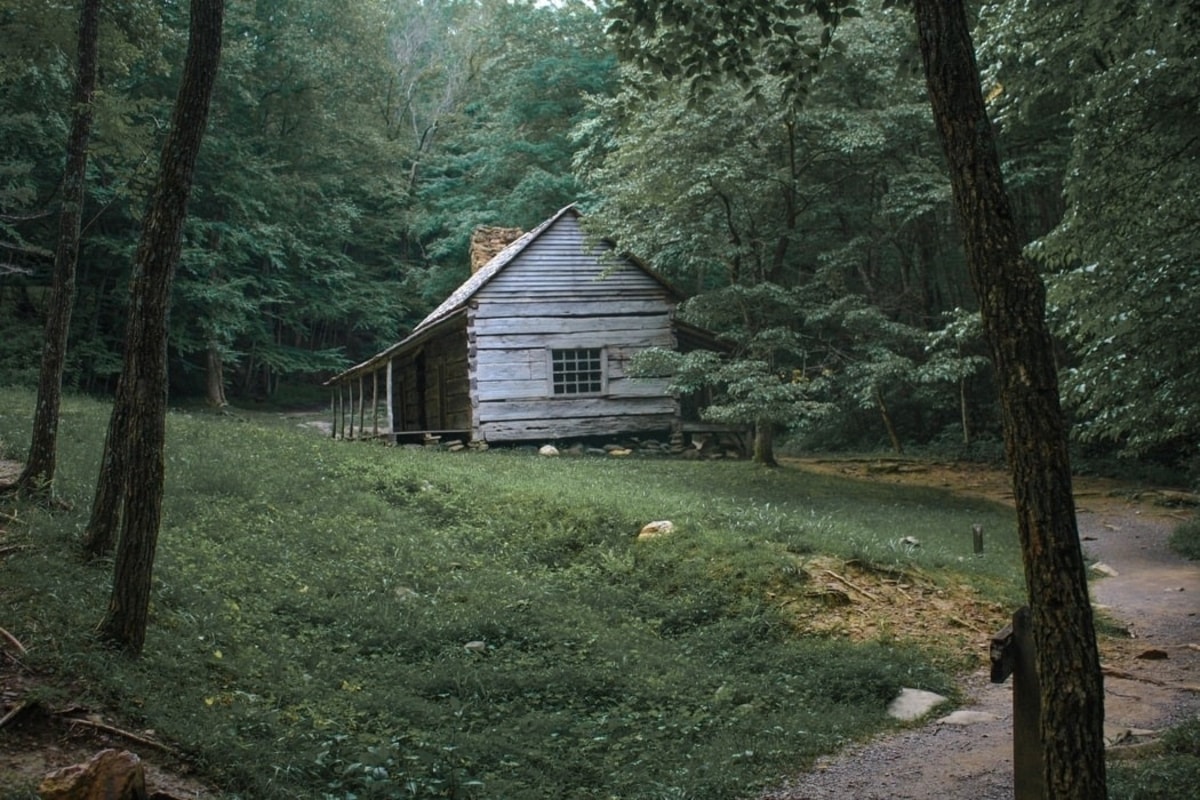
Hikers can enjoy the Smoky Mountains all year long with every season offering something special. In winter, the bare trees offer new views along trails and reveal stone walls, chimneys, foundations, and other reminders of past dwellings. The spring provides the most spectacular wildflowers and flowering trees. During the summer, hikers can find cool spots in the forests or follow the mountain streams to beautiful waterfalls. Autumn hikers have the crisp fall colors to enjoy.
The toughest part is choosing which trail to take. Check out the park’s trail map online before you go or stop in at one of the visitor centers before hitting a trail. There are trails that will give you optimal views of waterfalls, will take you deep into the spectacular old-growth forests, and others that offer endless views. There are even some kid-friendly hikes for the whole family.
Visit for a day of hiking, or spend the night at one of several different types of campsites within the national park. The park offers backcountry camping for backpackers who want to hike a few miles to a site located within the park. Frontcountry camping keeps you near your car in a developed campground if you like to be a little closer to civilization. There are even horse camps that are accessible by vehicle and offer hitch racks for horses and primitive camping facilities.
Pisgah National Forest
The Pisgah National Forest is in the most western corner of North Carolina and covers 500,000 acres of land with hundreds of miles of trails. This national forest is known for its cascading waterfalls and mile-high peaks, including some of the highest peaks on the east coast, making it one of the most picturesque places to visit in North Carolina.

A nice place to start exploring Pisgah National Forest is the Pink Beds Loop Trail. This heavily forested area is named after the abundance of rhododendrons and wildflowers found in the area. The trails here are relatively flat and are perfect for taking in the scenery.
Not far from the Pink Beds is Sliding Rock, a natural waterslide that is a bucket list item of places to visit in North Carolina. The 60-foot waterfall flows into an eight-foot pool perfect for those looking to splash into some cold mountain water. Sliding Rock is accessible 365 days a year and is staffed with lifeguards and open restrooms from Memorial Day weekend through Labor Day weekend. After Labor Day weekend, the area is staffed only on weekends through October, weather and water levels permitting. When not staffed, you can still enjoy Sliding Rock, but there are no lifeguards and the restrooms are closed.
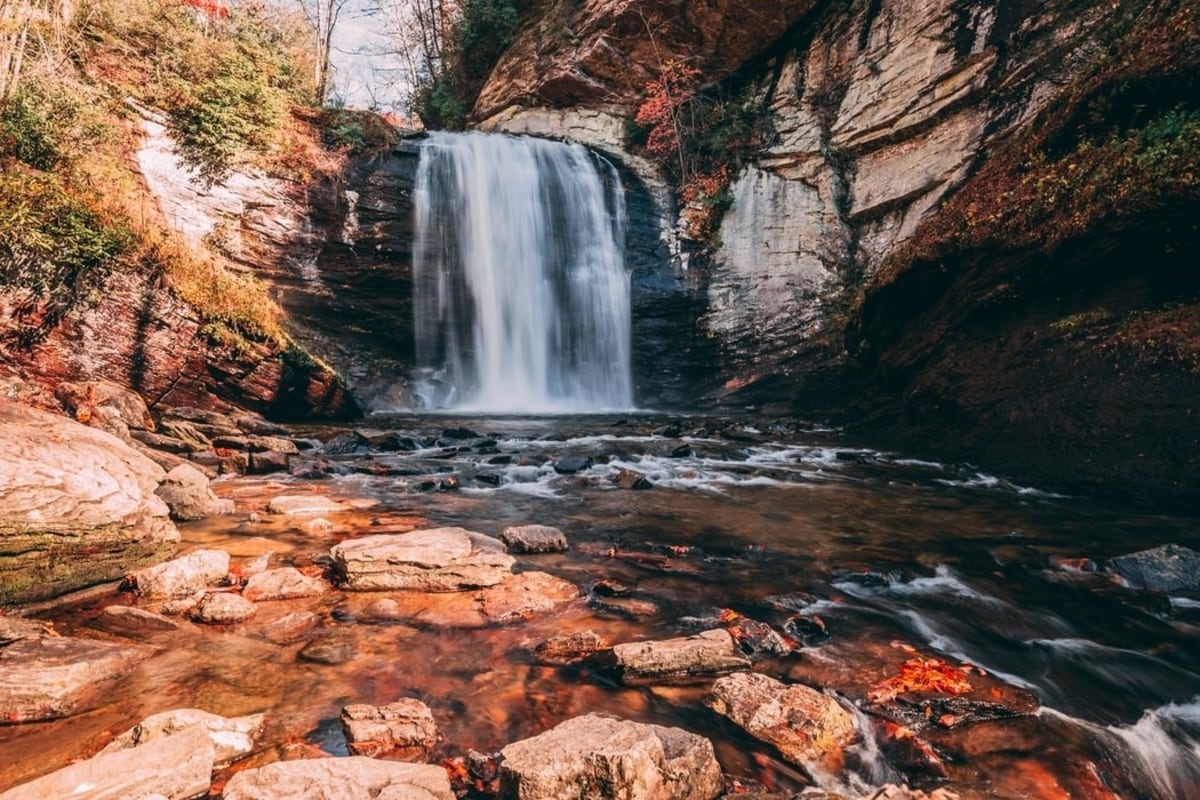
After Sliding Rock, visit Looking Glass Falls, one of the country’s most popular and most photographed waterfalls. The 65-foot drop is a gorgeous sight in the warmer months, but it is worth a trip in winter as well. The waterfall got its name because during cold weather a layer of ice forms on the waterfall resembling a looking glass.
If you need a break from hiking, Pisgah National Forest is also home to the first school of forestry in the United States, which is now preserved at the Cradle of Forestry in America historic site. Here you will find paved trails (perfect if you have little ones in strollers) and a sustainably-designed Forest Discovery Center with interactive exhibits, guided tours, nature programs, craft demonstrations, and all kinds of special events. Be sure not to miss the restored 1915 logging locomotive on the Forest Festival Trail.
Whether North Carolina is on the list of states you would like to visit or you happen to live in the state and want to explore areas you have not yet visited, there is probably something for you on this list of places to visit in North Carolina. From the beach to the mountains, there are so many beautiful pockets to explore. So pack up the car, grab your camera, and head out for what will likely be one of your most scenic trips ever.
WANT TO READ MORE?
Check out A Beginners Guide to Grand Canyon Camping!
ENJOYED THIS? CONNECT WITH US ON SOCIAL MEDIA
• Newsletter: Every Avenue Travel delivered to you
• Facebook: @EveryAvenueTravel
• Instagram: @TravelEveryAvenue
💖WANT TO TRAVEL MORE?💖
Subscribe to receive trip ideas and inspiration right into your inbox once a week!
📌PIN THIS FOR FUTURE REFERENCE 📌

Photo credits: unsplash.com, National Park Service


